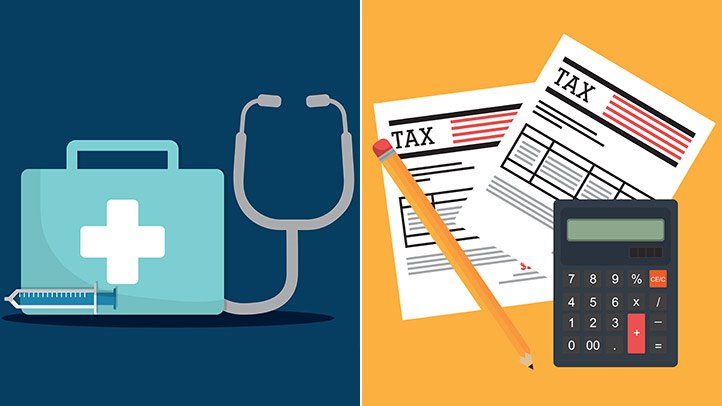The government has set up certain federal level tax breaks that are geared towards helping small businesses. A small business is defined in this context by how many employees you have on your companies payroll. Growing your startup is usually the goal of any entrepreneur but you also must understand as you hire more workers how it could affect your access to taking advantage of certain types of small business tax credits
Small Employer Retirement Plan Tax Credit

IRS form 8881, is called “Credit for Small Employer Pension Plan Startup Costs” and this is a tax break that can amount to a credit of 50% of expenses up to $1,000 ($500 credit limit per year ) for starting a qualified retirement plan for your workers. This could be funding a 401(k) plan for your employees. This credit can be claimed for 3 years, and you can even elect to have the year before starting the plan as the first credit year if you like. Here is the caveat, you must have less than 100 employees. And one other stipulation is that each employee needs to receive at least $5,000 in compensation from the company in the prior year in order to qualify for this credit.
You also must have a least one staff member who was a non-highly compensated employee signup and participate in the plan. Barbara Weitsman of Small Business trends explains the final rules for qualifying are: “You can’t claim the credit if during the three tax years preceding the first credit year, you established or maintained a qualified employer plan. This would include any plan to which contributions were made. It would also include plans where benefits were accrued. And it would include any plan for substantially the same employees as are in the new qualified employer plan.” The Secure Act , (H.R. 1994) that is currently pending bipartisan bill that if passed in both the House and Senate could increase the potential tax credit for setting up a retirement plan (increase the maximum credit amount to $5,000 instead of $500) and create a credit for auto-enrollment option in a qualified retirement plan such as a 401(k).
Small Employer Health Insurance Credits

Now IRS Form 8941, which is titled “Credit for Small Employer Health Insurance Premiums” is a small business tax credit of up to 50% of the premiums you pay for your workers health coverage. To qualify for this health insurance plan credit, your small business must have fewer than 25 full-time staff members full-time equivalent (FTE) employees and their average wages are below a threshold amount. Figuring out the calculations for each employee can be a little tricky. You can not include these types of workers:
- A sole proprietor
- Partner
- LLC member
- More-than-2% S corporation shareholder
- Owner of more than 5% of the business
- Or a family member of any of these individuals
- And seasonal employees who work 120 or fewer days per year
You are able to count 30 hours per week by other employees as adding up to one FTE. You must exclude from the calculations any hours that go beyond 2,080 in a given year. Meaning you are only counting 40 hours per week for each employee no overtime.
But do count 30 hours per week by other workers as amounting to one FTE. Exclude from the calculation any hours that exceed 2,080 in the year. So, in effect, only 40 hours per week are counted for any employee.
Disabled Access Credit

IRS Form 8826 which is titled “Disabled Access Credit” is another small business tax credit of 50% of costs over $250 but not over $10,250 of the eligible expenditures to make your workplace entrances more accessible or other adaptive services such as:
- Removing barriers that prevent your business from being accessed or used by disabled individuals
- Interpreters or other means of making audio available to the hearing-impaired
- Readers, taped text or other means of making visual materials available to the visually-impaired
- Equipment or devices for disabled individuals
The maximum tax credit you can claim is $5,000. To qualify for this type of tax credit you must have less than 30 full-time employees during the prior year or have less than $ 1 million in gross revenue or receipts in the year preceding it. The IRS considers a full-time to be someone who works for you for at least 30 hours per week for at least 20 or more calendar weeks in a given year. Mile IQ wrote an informative article about the disabled tax credit.
More Small Business Tax Credits
SIMPLE IRA plan
According to Investopedia, a “Savings Incentive Match Plan For Employees Of Small Employers (SIMPLE) is a type of tax-deferred retirement account that may be established by employers, including self-employed individuals.” These kind of retirement plans are only eligible for small businesses who have less than 100 employees who also received at least $5,000 compensation in the prior year. The employer may make either matching or non-elective contributions to each eligible employee’s SIMPLE IRA plan, and employees may make salary deferral contributions.
SIMPLE Cafeteria Plans
According to Vitacompanies article, simple cafeteria plans provide useful tax advantages by allowing employees to pay for health coverage, flexible spending accounts, and other options from their pay before taxes are deducted. By making pretax contributions, the employee saves money from reduced income taxes and both the employee and employer save from lower payroll taxes. In exchange for the tax advantages, however, cafeteria plans must comply with requirements under §125 of the Internal Revenue Code, including nondiscrimination testing to ensure the plan does not disproportionately favor highly-compensated employees. These are plans offering employees a menu of fringe benefits. It can only be used for businesses with 100 or fewer employees on business days during either of the 2 prior years.
Conclusion
Consult a professional CPA or tax advisor to review your eligibility for any of these small business tax credits.










